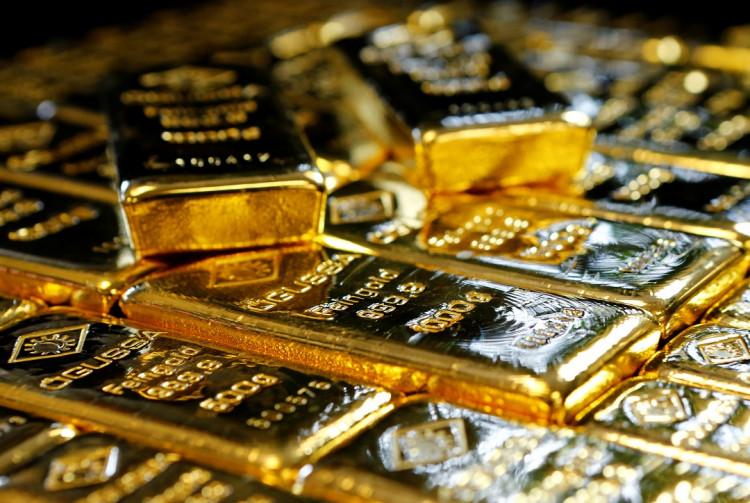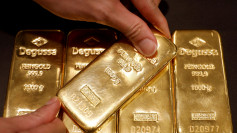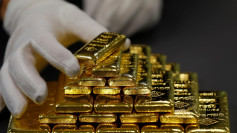Gold surged past the $2,700 mark for the first time on Friday, driven by growing safe-haven demand amid escalating tensions in the Middle East and expectations of further monetary easing by major central banks. Spot gold rose by 0.6% to $2,709.81 per ounce by midday, briefly touching an all-time high of $2,714 earlier in the session. U.S. gold futures also gained 0.7%, reaching $2,725.
The recent rally was largely fueled by heightened geopolitical uncertainty, particularly the escalating conflict between Israel and Hezbollah, and broader tensions in Gaza and Lebanon. The situation has caused investors to flock to safe-haven assets like gold. "The markets continue to look to geopolitics, and the overnight developments in the Middle East continue to fan the flames of uncertainty," said Rhona O'Connell, an analyst at StoneX.
Hezbollah's announcement of a new, escalating phase in its conflict with Israel, coupled with Israeli Prime Minister Benjamin Netanyahu's vow to press on with military actions in Lebanon and Gaza, has added to the sense of instability. This has prompted a surge in safe-haven buying, pushing gold prices higher. "There's no surprise that gold broke fresh highs and the psychologically important $2,700 mark," said independent analyst Ross Norman. "It appears speculative interest is coming from that region."
Gold's rally has been remarkable, with prices surging more than 31% this year. The gains have been driven by both geopolitical fears and expectations of continued easing from major central banks, including the U.S. Federal Reserve. Analysts suggest that the current market conditions, combined with declining inflation and steady U.S. Treasury yields, have bolstered the appeal of gold as an investment.
"Gold is benefiting from some very high conviction trades, and not only is it ignoring key factors like inflation declining and Treasury yields, but it is scarcely pausing for consolidation - let alone profit-taking," Norman added. The broader anticipation of dovish monetary policy by global central banks has also supported gold's rise, as traders expect interest rates to remain low.
On a technical level, gold could face resistance around the $2,750 mark, which represents the upper boundary of a rising trend channel that has been in place since late July, according to Frank Watson, a market analyst at Kinesis Money. "Should gold continue to push higher, it may encounter resistance at around $2,750 an ounce," Watson said, suggesting that the metal could experience some consolidation before attempting further gains.
Despite gold's positive momentum, there are signs that investors may be considering profit-taking, especially as the market approaches potential resistance levels. Some analysts warn that the sharp gains could prompt a correction. However, the overall outlook remains bullish, supported by both fundamental factors and ongoing geopolitical tensions.
Silver and other precious metals have also benefited from the safe-haven rally. Spot silver rose by 1.2% to $32.08 per ounce, heading for a weekly gain, while platinum and palladium both added 1.5%, reaching $1,007.25 and $1,057.82 respectively. The broader rally in precious metals highlights the widespread risk aversion among investors.
U.S. Treasury yields held steady on Friday, reflecting economic resilience despite the geopolitical uncertainty. Strong retail sales data for September, which showed a 0.4% rise, alongside lower-than-expected weekly jobless claims, underscored the strength of the U.S. economy. This stability has contributed to expectations that the Federal Reserve may maintain a more accommodative stance in the coming months.
"Gold's rise has been so powerful that it seems to be ignoring key factors like declining inflation and stable Treasury yields," Norman noted. While the economic data suggests resilience, the safe-haven appeal of gold amid geopolitical unrest remains a dominant theme, drawing investors seeking refuge from market volatility.
The ongoing conflicts in the Middle East, particularly the escalating tensions involving Hezbollah and Israel, are likely to keep safe-haven demand elevated. The outlook for gold remains bullish as long as geopolitical risks persist and central banks continue to signal monetary easing. "Given the current geopolitical instability and expectations for continued monetary easing, the outlook for gold remains bullish in the short term," Watson said.
Looking ahead, any further escalation in Middle East tensions or additional dovish signals from central banks could drive gold prices even higher, with the next key target being $2,750. Analysts remain cautious but optimistic, highlighting that while a consolidation phase may be likely, the broader trend for gold continues to point upward.






